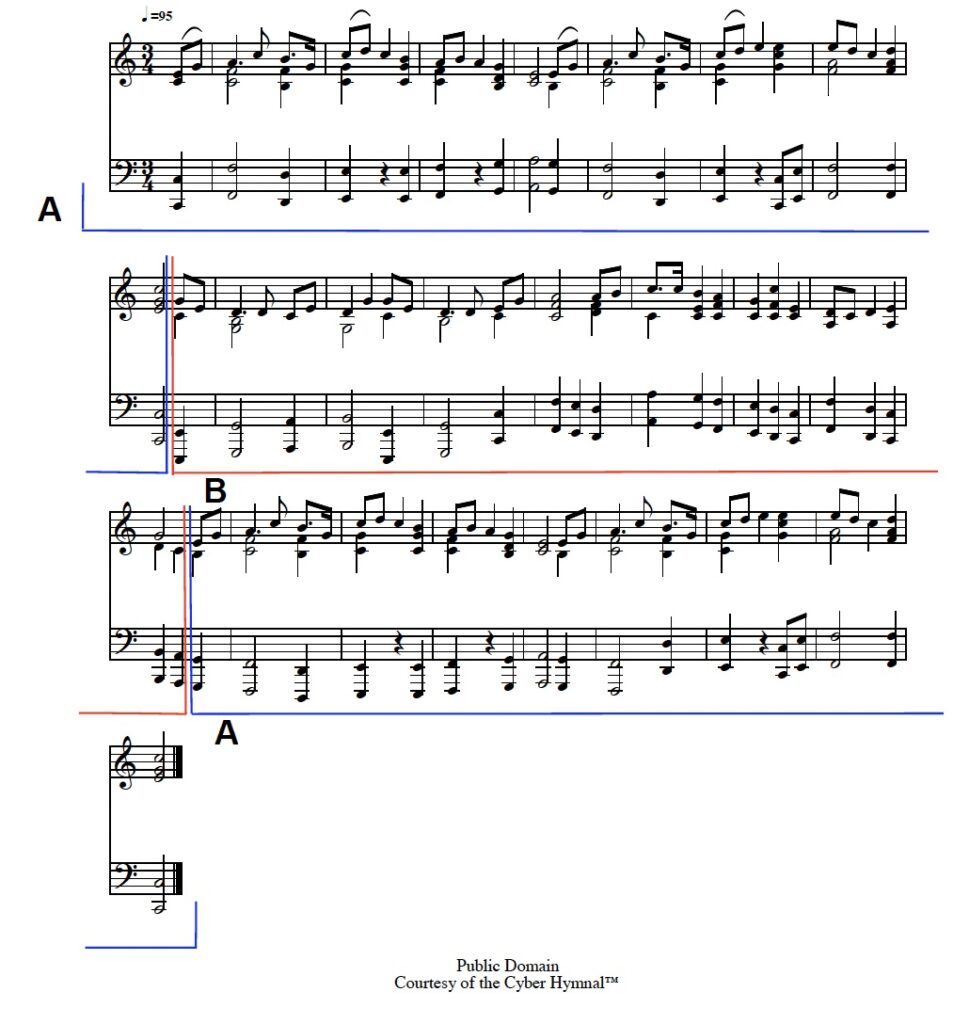Welcome to our new series: Utilizing Public Domain for Your Ministry. Throughout this series, we will examine public domain melodies as entities all their own, separate from any texts they have been combined with over the years. We want to help musicians think creatively about how to pair old melodies with new (or new to your congregation) texts and to point out some musical considerations that you may want to focus on when choosing songs for your congregation. We hope this series will inspire your ministry and invigorate your worship experience!
Public domain titles are versatile and accessible options for music ministry. Since public domain texts and tunes can be used in any way without licensing permissions, they provide unique opportunities for congregational use. This month, we feature Gustav Holst’s THAXTED.
THAXTED has been paired with many different texts since its composition in 1914. Even though Holst’s original melody is in the public domain, many of the texts and musical arrangements associated with it are protected by copyright. Always make sure the version you plan to use is the public domain version, or that you have the proper licensing in place for a copyrighted version.
THAXTED is an example of Holst’s talent for composing impressive melodies out of simple materials. The tune originated as his theme for Jupiter, the “Bringer of Jollity” in his Planets suite. Holst began his work on The Planets in 1914, and “Jupiter: Bringer of Jollity” was one of the first movements to be completed. Jupiter’s melody would later be referred to as THAXTED, the village in which Holst made his home.
The melody’s range encompasses a full octave plus a third, fitting comfortably in the vocal range of most adults, even without specialized training. However, THAXTED’s alternating dotted and straight rhythms and alternating ascending and descending motion enliven the melody, surprising unfamiliar listeners while maintaining the interest of those among us who know and love the tune.
The ternary form (ABA) of the melody works to establish familiarity, then moves on to something new before recapping the familiar section. As the 24 measures of THAXTED unfold, you’ll notice that the first and last 8 measures sound identical, while the middle 8 measures add contrast. Many of our favorite hymn tunes use a similar form, and this helps congregations know what to expect during group singing, even if they don’t read music.

Holst lived well into the 20th century, but rather than embracing the atonality of many other composers of the time, Holst worked with more traditional harmonies, providing cherished, singable melodies like THAXTED. Holst left a vast legacy of vocal repertoire, but orchestral musicians will also recognize his Planets suite, and wind players have likely encountered his First and Second Suites for Military Band.
As mentioned above, many authors have created texts that fit with the meter of this hymn tune. THAXTED’s meter is expressed as 13 13 13 13 13 13, meaning 6 lines with 13 syllables each. What all of these texts have in common is the pattern of stressed and unstressed (or strong and weak) syllables. The strong syllables of text align with the strong beats of the melody.
Take, for example, the first stanza of Cecil Spring-Rice’s text for “I Vow to Thee, My Country,” which is in the public domain. Below, you will see the strong syllables in bold text.
I vow to thee, my country, all earthly things above,
entire and whole and perfect, the service of my love:
the love that asks no question, the love that stands the test,
that lays upon the altar the dearest and the best;
the love that never falters, the love that pays the price,
the love that makes undaunted the final sacrifice.
Text authors intentionally consider how the strong and weak beats of the melody will emphasize the meaning of the text. Sometimes, those stressed beats can accent an internal rhyme (like “altar” and “falter” above); other times, composers will use the stressed beat to emphasize the words that they consider most important (look at how many times “love” occurs on a stressed beat in Spring-Rice’s setting). Notice also how the lyrics change focus as THAXTED moves from the A section (in italics) to the B section (in roman) to another A section (in italics again). In the first A section, Spring-Rice pledges his love to his country; in the B section, he defines the qualities of that love; and in the second A section, he takes the love to its dramatic conclusion: “the final sacrifice.”
Since THAXTED is in the public domain, the options for creativity are limitless! You can create your own text, use a public domain text, or even create your own composition or improvisation for a prelude or offertory – all without needing any licensing or permissions. You might choose to pair THAXTED with a copyrighted text. If you do this, be sure you have the appropriate licensing permission to use the copyrighted text and be sure to report your use.
Part of what makes the tradition of setting new texts to old melodies so wonderful is that we as music ministers can pass down the skills and knowledge from past generations while reinventing beautiful expressions of our faith.
In the spirit of this reinvention, the ONE LICENSE Team invites readers to submit their own original verses to Holst’s THAXTED. Please email submissions to info@onelicense.net any time in November or December of 2025. The ONE LICENSE team will choose a favorite to share in our January newsletter! Please note: You will retain the copyright for your original text.
Photo by Brett Sayles: https://www.pexels.com/photo/black-and-brown-wooden-bench-photo-937486/
